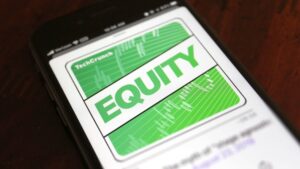Every organization aims to obtain overall business productivity and get the maximum value out of the investments they make. But, how exactly can businesses do this?
A workflow software automates repetitive tasks and minimizes human intervention, allowing you to focus on work that moves the needle for your business.
Sure, implementing a workflow software requires a lot of time and effort from everyone across the organization. However, you can make sure that all that hard work will be worth it. If the benefits of the software exceed the price you’ve paid for it, you’ll have positive outcomes.
In our guide, we’re going to delve into a metric called return on investment (ROI) and why it matters in your decision to invest in workflow software.
What Is ROI?
Return on investment, also known as ROI, is a key performance indicator that determines an investment’s profitability. From stock to technology investments, this metric has a wide range of applications, making it very important for businesses of all shapes and sizes.
By measuring ROI, you can get crucial insights that can maximize your financial gains, productivity, and efficiency. Measuring workflow ROI, for instance, can help you understand how effective your processes are. You’ll also be able to determine which processes are generating favorable results and which ones aren’t.
At the same time, reliable workflow software can help you boost your ROI by streamlining and simplifying processes.
How to Calculate ROI
An ROI is calculated by dividing the net return of the investment by its cost. To calculate the net returns, you must subtract the amount of money you earned from the investment from the total cost of the investment. Then, you divide that figure by the total cost of the investment.
Since an ROI is usually expressed in percentage, you need to multiply the quotient by 100 to get that percentage.
Here’s the formula for calculating an ROI of an investment:
ROI (%) = [net profit/total investment] x 100
You have a positive ROI when your total returns exceed the costs. If your total costs are greater than the returns, you should get a negative number in your calculation. This indicates that you are losing money from your investments.
Take note that measuring your ROI isn’t always as simple as using a math equation. For instance, measuring intangible factors like automation can be difficult.
ROI Metrics of Workflow Automation
To fully understand the ROI of your investments or decisions, you need to look at hard and soft ROI metrics. Here are some metrics that you can use to measure the success of workflow software.
Soft ROI
Soft ROI refers to intangible metrics that are difficult to quantify. This includes company morale, customer satisfaction, brand reputation, and company culture. Compared to hard ROI, soft ROI may take a longer time to generate returns.
Take automation for example. If you’re trying to determine the ROI of a workflow software, your soft ROI metrics might include reduced bottlenecks, increased adherence to policies, and improved process efficiency.
Although your soft ROI metrics can be measured through surveys and other similar tools, you won’t get completely accurate results. After all, you can’t attribute all these improvements to the workflow software you’ve implemented. This is why you need another metric called hard ROI.
Hard ROI
Hard ROI refers to quantifiable metrics, such as time and cost savings. Since workflow software is designed to improve efficiency in your organization, its success can be measured by calculating time and cost savings.
Other hard ROI metrics include operation costs, rate of workflow approval, and rate of workflow completion.
How to Calculate ROI of Workflow Automation
If you’re measuring ROI from automating business workflows, make sure that a few months have passed since the software’s implementation. You would need time to get a full return on your investment. Hence, you can’t get accurate results in a few weeks.
Calculate annual workflow cost
First, you must determine how much your workflow process costs without any automation. How long does it take you to complete tasks without automation? Once you’ve determined how many minutes it takes employees to complete a task, you can figure out how much the job costs in wages.
Here’s the formula:
Annual workflow cost = time (how long it takes to complete tasks) x cost (how much you pay employees per hour) x frequency (how often the workflow is performed per month) x 12 months
Calculate your savings
Now that you have a benchmark, you can figure out how much time you can save with automation. In turn, you’d be able to gauge how much you can save in employee wages.
Take the same calculation in Step 1 to determine the costs of an automated workflow. Don’t forget to include the total cost of your workflow software, as well as its implementation.
Here’s the formula:
Automated workflow cost = time x cost x frequency x 12 months + overall workflow software and implementation expenses
Calculate your ROI
Before measuring your ROI, calculate your net savings. You can do that simply by subtracting the automated workflow cost from your current annual cost.
Using the aforementioned formula for ROI, divide the total cost of automation by your net savings. Then, multiply the quotient by 100 to get your annual workflow automation ROI.
To make your life so much easier, software vendors usually have ROI calculators that can help you estimate your potential savings from automating your workflows. Even without entering a line of code, you can gauge how much you save by implementing workflow software.
How Workflow Software Increases ROI
Workflow software is designed to simplify and streamline processes, enabling you to focus on value-added activities.
Here’s how your workflow software can improve your ROI:
Reduces errors
By automating mundane and repetitive tasks, you can prevent errors from occurring. If they do happen, you can easily determine where the errors are coming from and fix them. That means your employees won’t have to spend so much time revising or redoing tasks.
Heightens productivity
Workflow software improves how you operate your business. With automation, you can free up your workforce’s time, enabling them to focus on high-value activities, such as problem-solving and innovation. Higher productivity can lead to more time and cost savings.
Improved connectivity
A workflow software promotes connectivity. Using built-in or integrated communication tools, you can connect with your entire team from anywhere and work toward a shared goal. This enables you to get more work done in less time with fewer errors.
Wrapping Up
Regardless of your industry, you can benefit greatly by enhancing workflow processes using automation. Software expenses, unlike equipment and other tangible expenses, are considered capitalized expenditures. That means these expenses eventually become assets.
Workflow automation software can reduce costs, approval cycle times, and even generate positive ROI in a few months. Some areas in business that can produce the highest ROI from automation include marketing, customer service, and employee hiring.
With workflow software, you can build a digital workplace. You can integrate tools you already use, including ROI calculators. This helps your workforce become more productive in a single unified platform.









